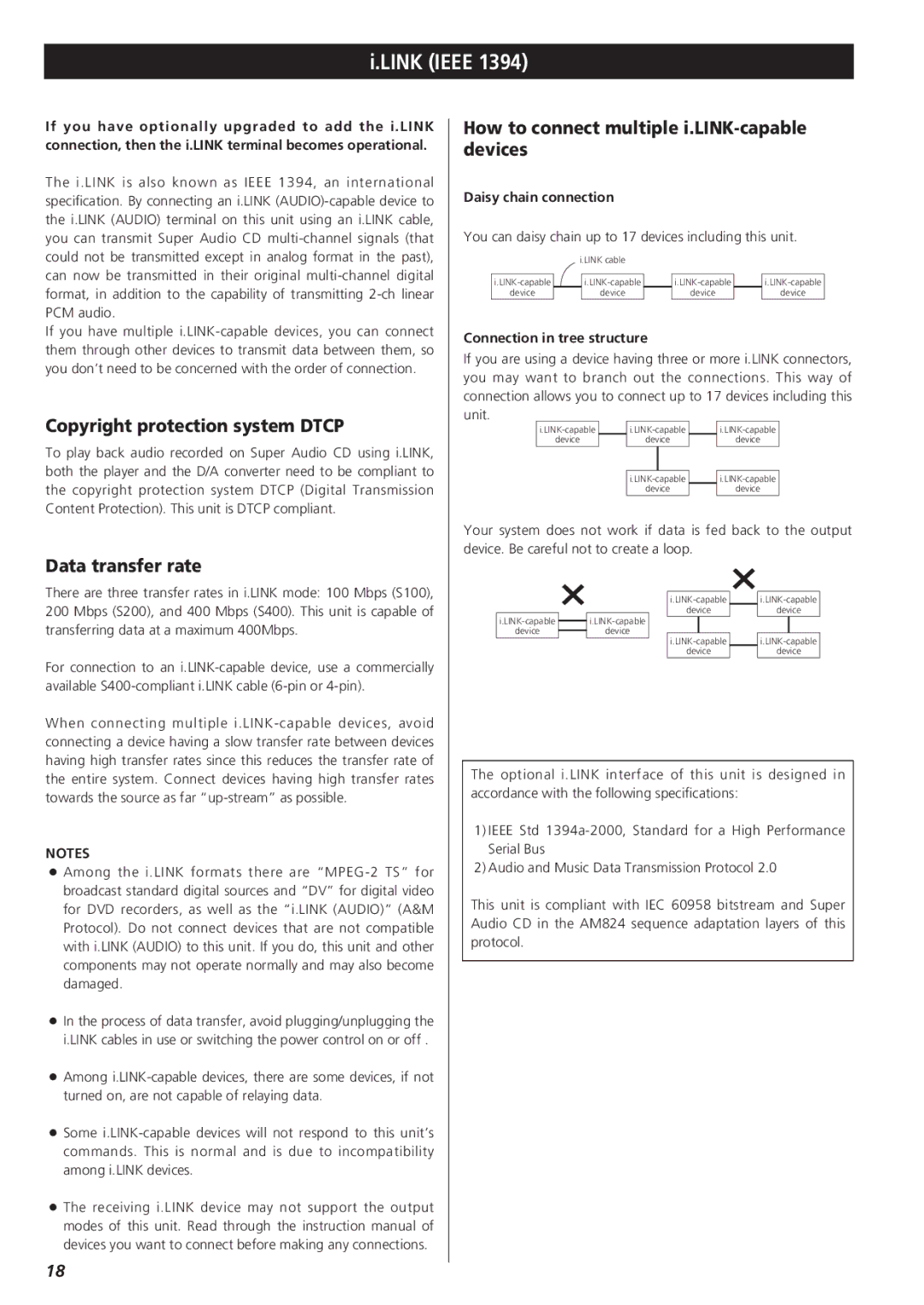
i.LINK (IEEE 1394)
If you have optionally upgraded to add the i.LINK connection, then the i.LINK terminal becomes operational.
The i.LINK is also known as IEEE 1394, an international specification. By connecting an i.LINK
If you have multiple
Copyright protection system DTCP
To play back audio recorded on Super Audio CD using i.LINK, both the player and the D/A converter need to be compliant to the copyright protection system DTCP (Digital Transmission Content Protection). This unit is DTCP compliant.
Data transfer rate
There are three transfer rates in i.LINK mode: 100 Mbps (S100), 200 Mbps (S200), and 400 Mbps (S400). This unit is capable of transferring data at a maximum 400Mbps.
For connection to an
When connecting multiple
NOTES
<Among the i.LINK formats there are
<In the process of data transfer, avoid plugging/unplugging the i.LINK cables in use or switching the power control on or off .
<Among
<Some
<The receiving i.LINK device may not support the output modes of this unit. Read through the instruction manual of devices you want to connect before making any connections.
How to connect multiple i.LINK-capable devices
Daisy chain connection
You can daisy chain up to 17 devices including this unit.
| i.LINK cable |
|
|
|
| |
|
|
|
|
|
|
|
|
|
| ||||
device |
| device |
| device |
| device |
Connection in tree structure
If you are using a device having three or more i.LINK connectors, you may want to branch out the connections. This way of connection allows you to connect up to 17 devices including this unit.
|
| ||||
device |
| device |
| device | |
|
|
|
|
|
|
|
|
| |||
|
| device |
| device | |
Your system does not work if data is fed back to the output device. Be careful not to create a loop.
|
|
|
|
| ||||||
|
|
|
| device |
| device | ||||
|
|
|
|
|
|
|
|
| ||
device |
| device |
|
| ||||||
|
|
|
|
| ||||||
|
|
|
| device |
| device | ||||
The optional i.LINK interface of this unit is designed in accordance with the following specifications:
1)IEEE Std
2)Audio and Music Data Transmission Protocol 2.0
This unit is compliant with IEC 60958 bitstream and Super Audio CD in the AM824 sequence adaptation layers of this protocol.
18
